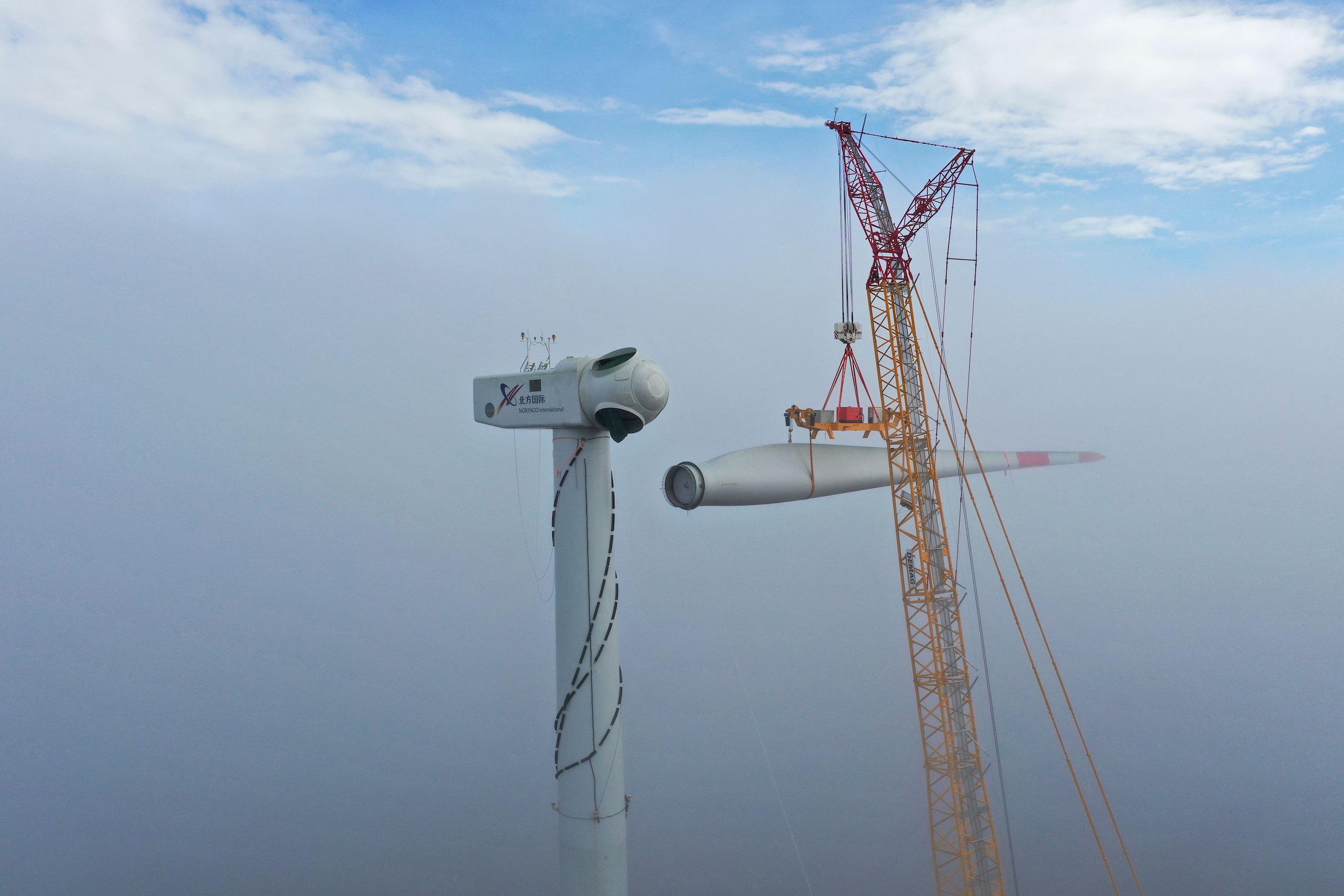The latest guidelines are another important milestone towards greening China’s overseas projects and investments. They are – to our knowledge – the most comprehensive document by any country regulator to guide environmental management of overseas projects by either public or private companies.
This January, less than six months after publishing the “Green development guidelines for overseas investment and cooperation”, China’s ministries of commerce and of ecology and environment issued another set of recommendations with a similar name: “Guidelines for ecological and environmental protection of foreign investment cooperation and construction projects”.
How is this document different to last year’s? And how does it add value?
Simply put, the latest release reaffirms recommendations made in the earlier guidelines but has more focus on specific issues of environmental risk management throughout the whole lifecycle of Belt and Road projects. It provides more robust direction to manage environmental risks in specific sectors, such as energy, transport and mining.
It also reflects wider developments in recent months. Since the publication of last year’s guidelines, in July, China has made important commitments to support green overseas development. Notably, President Xi pledged China would no longer build new coal-fired power plants abroad, and would support green low-carbon energy in developing countries. In November, he further elaborated that China is exploring the establishment of an early warning and assessment system for overseas project risk.
These announcements underscored the need to further specify responsibilities of enterprises in addressing environmental risks when engaging overseas. Thus, the new guidelines further emphasise an important aspect of the 2021 guidelines: that it is no longer sufficient for Chinese enterprises operating abroad to abide by host-country environmental standards – particularly so if the host country has insufficient environmental regulation or law enforcement. Rather, where local regulations are insufficient, companies are encouraged to apply international or Chinese environmental rules and standards across the life of a project.

This is a critical development, and shows increasing ambition to raise standards. Under previous guidelines, including the 2013 “Guidelines for environmental protection in foreign investment and cooperation”, also jointly issued by the ministries of commerce and of ecology and environment, merely recommends application of host-country environmental regulations.
Also new in the 2022 guidelines is better guidance for environmental protection on pollution and climate, and most importantly on biodiversity conservation, with more concrete actions recommended on the protection and restoration of ecosystems, as well as avoidance of key biodiversity areas.

The latest guidelines call on both private and state-owned enterprises “to implement the concept of ecological civilisation” and to “promote the green and high-quality development of projects” in new overseas projects, reconstruction and expansion projects, as well as mergers and acquisitions.
What do the guidelines say, in more detail?
In its 25 articles, the 2022 guidelines describe how companies should integrate environmental considerations through a project’s life – from planning to construction, management and deconstruction, as well as in information disclosure.
Accordingly, enterprises are encouraged to:
- adopt international standards or China’s stricter standards for environmental protection if they operate in host countries with weak environmental governance;
- improve their internal environmental management systems with reference to international practices, and appoint dedicated personnel to be responsible for ecological protection;
- engage consulting services that are familiar with domestic and foreign environmental law, and have the international capability to support environmental evaluations;
Enterprises are also encouraged to focus on reducing environmental risks in three areas:
- on pollution, they should control and minimise emissions related to water, noise, dust, vibration and solid waste, as well as other pollutant discharges;
- on climate, companies should “make a positive contribution to addressing climate change”, for example, by preferring low-carbon projects (in energy, for example) and in “green supply chain management and green procurement”;
- on biodiversity, they should, among other things, conduct a targeted survey before constructing a project; if the results show high risks to biodiversity, they should reconsider the site.

The integration of these ecological considerations throughout a project, including the new stipulation to engage outside expertise to provide environmental impact assessments, align with many international good-practice standards for financing international projects.
Furthermore, the guidelines provide specific environmental risk management recommendations for four sectors:
- Energy: enterprises should focus on clean and renewable energy projects; hydropower projects should reduce adverse impacts on aquatic biodiversity.
- Petrochemicals: projects should focus on controlling pollution and greenhouse gas emissions, and environmental accident prevention.
- Mining: enterprises should focus on pollution control measures and waste disposal.
- Transportation: transport infrastructure projects should avoid nature reserves and important wildlife habitats.
These four sectors are most important to Chinese overseas investments and construction, particularly in the Belt and Road Initiative, where they account for about 70% of the project value.
How to apply the new guidelines?
Various Chinese organisations have developed handbooks to help integrate green development principles into the design and management of overseas projects.
The first is the Application Guide for Enterprises and Financial Institutions which was issued by the Belt and Road International Green Development Coalition (BRIGC) in October 2021. Chinese enterprises can use this as a supplementary support, particularly to the Green Development Guidance, also issued by the BRIGC in December 2020, which included a ‘traffic light system’ to help avoid and mitigate environmental impacts throughout a project’s life. The guide provides, for example, a number of checklists to evaluate a project’s environmental performance in three environmental dimensions: biodiversity, greenhouse gas emissions and pollution. It also provides clear support for financial institutions on how to evaluate environmental risks of a project and how to incentivise higher environmental standards to reduce these risks.
Another practical aid is the Guide for Key BRI Sectors: Highways and Railways, also issued by the BRIGC, in October 2021. Providing sector-specific guidance for transportation infrastructure, the guide proposes environmental impact assessment indicator systems for railway and highway projects. These cover site and route selection, ecological and environmental impact, risk prevention, solid waste treatment, information disclosure and public engagement.
A third is the Project Finance Mechanism Handbook, published in September 2021, supported by the British Embassy in Beijing and developed in cooperation with the International Institute of Green Finance of the Central University of Finance and Economics. This handbook highlights step-by-step how project developers, particularly Chinese project developers, can include international project development standards by integrating environmental considerations early and throughout a project’s life, thereby more easily attract financing from international banks.

How impactful will the new guidelines be?
As with the 2021 version, the guidelines are “soft law” and cannot be enforced in court. Nevertheless, they send two clear signals to China’s state-owned and private enterprises.
First, that Chinese regulators are increasingly aware of complex environmental concerns, both at home and abroad, and are actively addressing them. With emphasis coming from the Chinese government – including repeated speeches by President Xi – on the need to tackle climate change at home and to play a positive role in global climate and environmental governance, overseas trade and investment clearly must support that strategy.
Second, the new guidelines show a strong ability among China’s regulators to work with international partners to build consensus, and learn from international peers on green finance and environmental governance. The guidelines were underpinned by findings from the Green Development Guidance for BRI Projects, a report developed by a consortium of Chinese and international researchers (including the authors of the present article), as well as the Green Investment Principles for the Belt and Road Initiative. Also, senior research and political partnerships between China and international actors, such as the China Council for International Cooperation on Environment and Development (CCICED), have generated much knowledge and ideas on how to improve Chinese environmental governance at home and abroad.
What are the next steps, ideally?
The latest guidelines are another important milestone towards greening China’s overseas projects and investments. They are – to our knowledge – the most comprehensive document by any country regulator to guide environmental management of overseas projects by either public or private companies. Such policy signals are more important to Chinese businesses, especially state-owned ones, which are more driven by top-down signals from government and state leaders, as compared to many western businesses, which are more influenced by bottom-up signals, such as financial markets, shareholders or civil society.
With these signals, Chinese enterprises have been enabled to quickly mothball or exit some of their “red” projects, as the recent announcement of the unavailability of a Chinese loan for the planned 700-megawatt Ugljevik III coal power plant in Bosnia shows.
Chinese enterprises have recently demonstrated a much greater interest in building internal environmental risk management capacity, while also increasingly working with environmental experts. For example, in two ESG (environmental, social and corporate governance) workshops co-organized by ClientEarth, BRIGC and the Institute for Finance and Sustainability, all of the largest financial institutions and multiple enterprises engaging in the Belt and Road Initiative participated and discussed recent issues and developments for ESG risk management.
As we wrote last time, we expect these greening trends in China’s overseas engagement to continue, for example through the provision of additional sector-specific guidance. In terms of further strengthening the greening of Chinese overseas finance, we see, in particular, an opportunity for improvement in environmental risk management. This could be achieved by offering clearer guidance on early risk-reduction mechanisms. These could include clear standards for environmental impact assessments, public participation in project development, and complaint or reporting systems that allow affected local stakeholders to raise any concerns directly to the financing institution.
We also see a significant opportunity to provide better standards for the disclosure of environmental information, as well as better guidance on climate change adaptation projects – both for enterprises and financial institutions. After all, it is not only enterprises, but also Chinese financial institutions that are critical levers in driving green development within China, and in greening the BRI. As they look to green their portfolios based on this new, emerging guidance, the whole Belt and Road may become greener.
Source: China Dialogue, February 15, 2022. https://chinadialogue.net/en/business/understanding-chinas-latest-guidelines-for-greening-the-belt-and-road/
Authors:
- Christoph Nedopil is a professor at Fudan University Fanhai International School of Finance.
- Dimitri de Boer is chief representative in China of ClientEarth, a European environmental law group.
- Danting Fan (范丹婷) is a legal researcher for ClientEarth Beijing Office with a focus on green finance, and was previously a dispute resolution lawyer in China.
Republished from China Dialogue under a Creative Commons license.